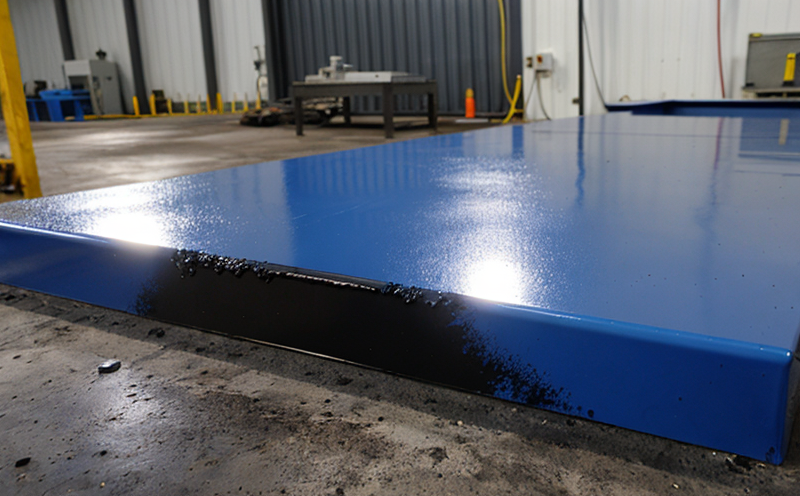ISO 9228 Corrosion Testing of Metallic Coatings in Atmospheres
The ISO 9228 standard provides a comprehensive approach to assessing the corrosion resistance and durability of metallic coatings exposed to atmospheric conditions. This test is particularly important for industries where long-term performance under environmental exposure is critical, such as automotive, aerospace, construction, and marine sectors.
Metallurgical testing laboratories play a crucial role in ensuring that surface coatings meet the necessary standards to protect against corrosion. The ISO 9228 methodology involves exposing specimens coated with metallic layers to controlled atmospheric conditions for extended periods. This exposure simulates real-world environmental stresses that might affect the performance of these coatings over time.
During testing, specimens are subjected to a range of atmospheric conditions including humidity, temperature variations, and pollutant gases. The duration of this exposure can vary depending on the specific requirements of the client or regulatory body. After the test period, the specimens are carefully examined for signs of corrosion such as pitting, cracking, or other degradation.
The results of these tests provide valuable insights into how well a particular coating will withstand environmental factors like salt spray, industrial pollutants, and general atmospheric exposure. This information is essential for quality assurance in manufacturing processes and helps ensure that products meet the necessary standards set by industry regulations and international norms such as ISO 9228.
For accurate results, it's important to follow all steps outlined in the standard precisely. Specimen preparation involves cleaning the surface thoroughly and ensuring uniformity across all samples being tested. The testing environment must also be controlled to ensure consistent conditions throughout the exposure period.
The ISO 9228 test is widely used because of its reliability and repeatability. It allows manufacturers, suppliers, and regulators to compare different types of coatings under identical conditions, making it a valuable tool in quality control processes. By using this standardized method, companies can ensure their products meet stringent environmental requirements while also reducing the risk of premature failure due to corrosion.
Understanding the nuances behind ISO 9228 testing is crucial for those involved in R&D and development within various industries. It helps them design more robust coatings that not only pass laboratory tests but also perform reliably in actual use situations. Additionally, this type of testing plays a key role in ensuring compliance with international standards like ISO 9228 which are critical for global trade.
In summary, the ISO 9228 corrosion test is an indispensable tool for evaluating metallic coatings exposed to atmospheric conditions. Its rigorous procedures help guarantee product quality and reliability, thereby protecting against potential failures caused by environmental factors such as salt spray, industrial pollutants, and general atmospheric exposure.
Scope and Methodology
The ISO 9228 standard outlines a detailed procedure for conducting corrosion tests on metallic coatings exposed to atmospheric conditions. This includes specifying the types of specimens that can be tested, the environmental conditions under which they should be exposed, and the methods used to evaluate the results.
- Types of Specimens: The test is applicable to various kinds of metallic coatings including paint films, anodic films, organic-inorganic hybrid layers, and other protective coverings applied to metal substrates.
- Environmental Conditions: Specimens are exposed to controlled environmental conditions that simulate real-world atmospheric exposures. These typically include variations in temperature, humidity levels, and the presence of pollutants such as salt aerosols or industrial emissions.
- Evaluation Methods: After exposure periods have concluded, the specimens are inspected visually for signs of corrosion like pitting, cracking, flaking, etc. In some cases, more sophisticated analytical techniques may be employed to measure changes in thickness or other physical properties.
The standard also provides guidelines on specimen preparation before testing begins as well as recommendations regarding post-test analysis procedures. Compliance with these protocols ensures accurate and reliable results that can be used confidently when making decisions about product performance or regulatory compliance.
By adhering strictly to the ISO 9228 methodology, laboratories ensure they are providing consistent and repeatable tests which maintain confidence in their findings across different locations and organizations.
Industry Applications
The application of ISO 9228 corrosion testing extends beyond just ensuring compliance with international standards; it has significant practical implications for various industries. Automotive manufacturers, for instance, rely heavily on this type of testing to develop durable paints that can withstand harsh environmental conditions without failing prematurely.
In aerospace applications, where aircraft components must operate reliably under extreme weather and climate variations, ISO 9228 provides a critical means of evaluating coating performance. Similarly, in marine environments where salt spray and high humidity are constant threats, this testing ensures coatings remain effective throughout their service life.
For construction materials, especially those used outdoors or exposed to aggressive environmental elements like acid rain or industrial emissions, ISO 9228 helps identify robust solutions that can extend the lifespan of buildings and infrastructure projects. In addition to these sectors, ISO 9228 plays a vital role in quality control processes within various manufacturing industries.
By leveraging the insights gained from this testing method, companies across different sectors can improve their product offerings by incorporating more durable coatings into their designs. This not only enhances customer satisfaction but also contributes positively towards environmental sustainability goals by reducing waste and resource consumption associated with frequent replacements of failing components or structures.





